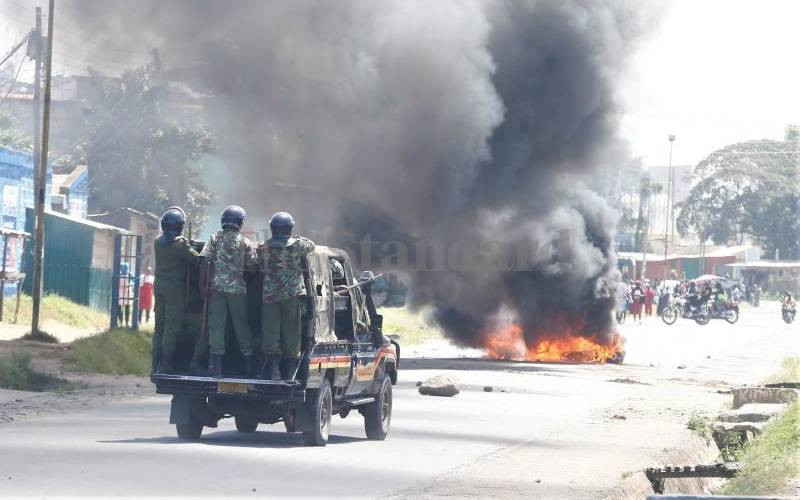
Article 37 of the Constitution says, “Every person has the right, peaceably and unarmed, to assemble, to demonstrate, to picket and to present petitions to public authorities.” Yet the phrase “peaceably and unarmed” is frequently glossed over by “demonstrators” engaged in acts of wanton vandalism, theft and murder. No stretch of imagination can call the impediment of traffic by bonfires lit in the middle of the road peaceable. Nor can the pelting with stones of motorists and innocent bystanders caught in the dogfights between demonstrators and the police be described as unarmed.
Yet it is becoming increasingly clear that those who have mooted current demonstrations that are rocking the country intend a regime change. It is also apparent that peaceful and unarmed protests, as envisaged by the Constitution, denudes this attempted power grab of the agency that it needs to sustain its cause.
An anatomy of these violent protests reveals them to be fueled by half-truths and outright embellishments. For instance, it is not true that the Kenya Kwanza (KK) administration is abstracted from the concerns of citizens. If anything, the government has broken away from the old unsustainable model of subsidising consumption. Unga, the national maize-meal staple and whose price serves as an informal metric of national well-being, is expected to become more affordable in the next few months when Kenya’s maize harvest season falls due. This is because the government has chosen to direct subsidies to production as seen in the distribution of cheap, quality fertilisers countrywide. A bumper harvest is in the offing.
Previously, cost of unga was allegedly subsidised even though it was never easily available in retail establishments and maize millers who bore the cost of the subsidies are yet to be compensated years down the line. Petroleum subsidies, prone to abuse by previous administrations have also been done away with. Other countries like Nigeria and Angola have also followed suit. Whilst it may call for a little belt-tightening in the short to medium-term, this development will eventually see benefits accrue to Kenyans when gains from reductions in global oil prices are realised.
Another lie, sedulously peddled by protest convenors, is that this administration is responsible for the present high cost of living. Anyone who has an inkling of geopolitics realises that when America sneezes, the rest of the world catches a cold. The US has been working to control inflation within it by raising interest rates. This has led to the divestment of US dollars from many countries around the world. Kenya’s currency vis-a-vis the US dollar has taken a hit. Because the country is a net importer, it has resulted in increased prices of imports impacting negatively on the cost of living. This situation is not limited to Kenya alone.
Clearly, proponents of mass action bank on the urban residuum to advance their agenda. With nothing to lose these unfortunate lot will not baulk at the destruction of property. Nor will they refrain from injuring innocent bystanders. A regime change through such unorthodox means is beyond the pale. The only acceptable form of leadership renewal is through national elections. Violent demonstrations cannot be countenanced one day longer.
Mr Khafafa is a public policy analyst